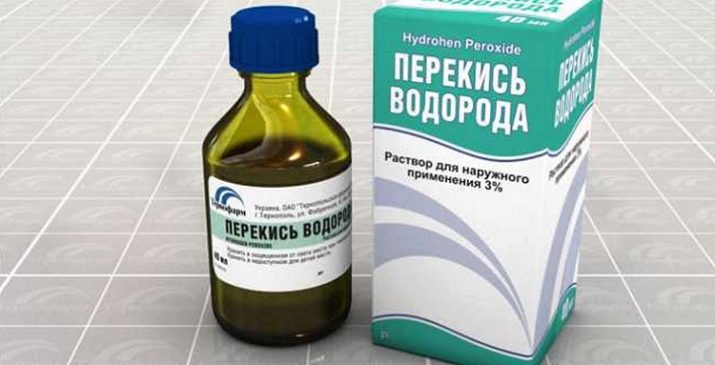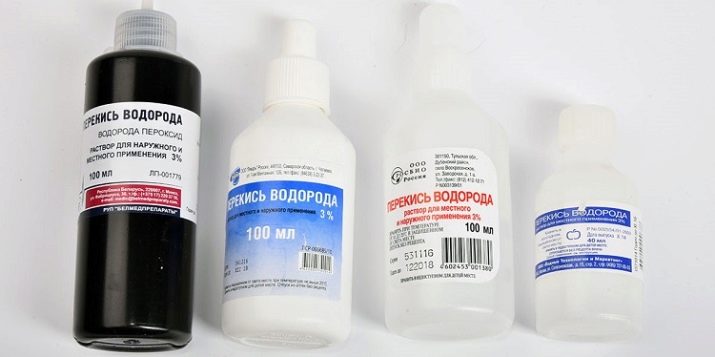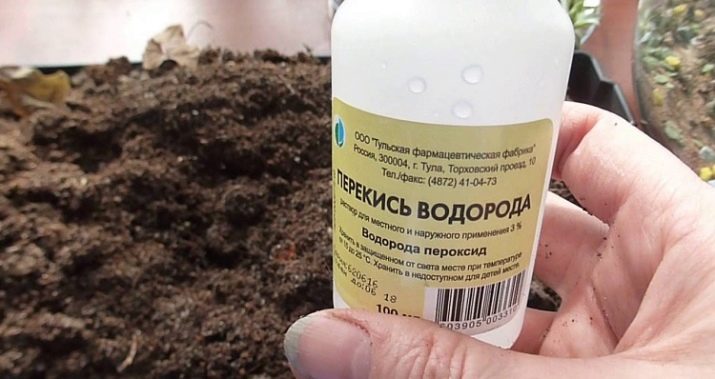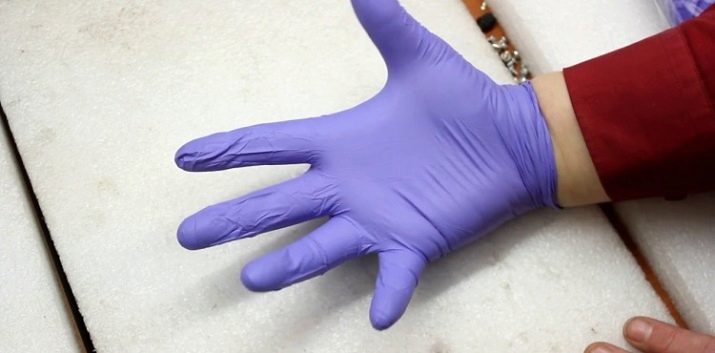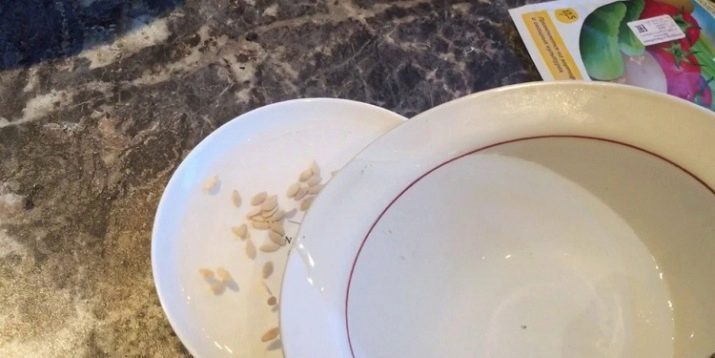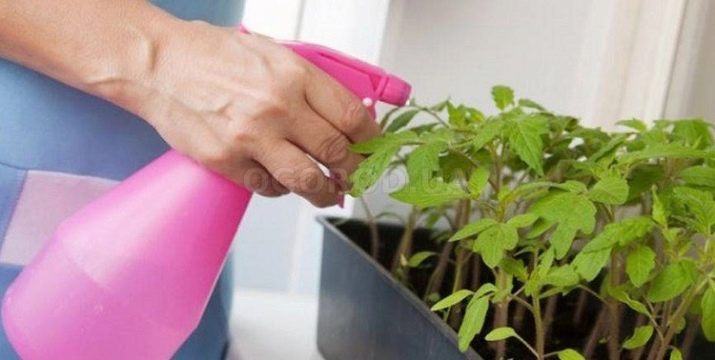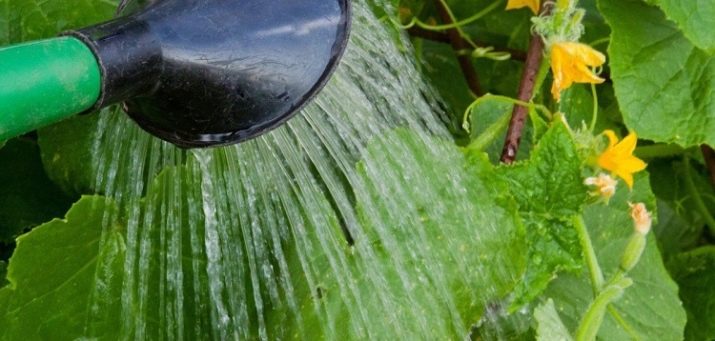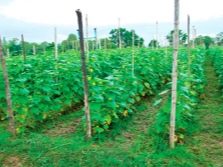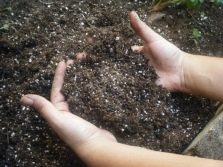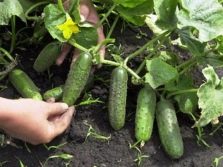Hydrogen peroxide for cucumbers: purpose and recommendations for use

Cucumbers are one of the main vegetable crops grown on the territory of Russia.Salads from fresh cucumbers, salting for the winter, and some even make tinctures for cosmetic purposes are very popular. Therefore, gardeners are interested in as large a crop as possible and sometimes they use top dressing for this. Moreover, in our latitudes to grow cucumbers in the garden is not so easy - they need to provide a warm and humid climate, as well as regularly fertilize.
Properties
Many know about hydrogen peroxide, its solution is sold in every pharmacy and is well known as an antiseptic. It is usually used to stop the blood in small wounds, their disinfection and healing. However, hydrogen peroxide can help when growing cucumbers.
In appearance, it is a liquid without color and almost odorless with a metallic taste (but you should not try it). Its main and frequently used property is the oxidation of organic substances. And the greater the hydrogen content in the solution, the stronger this effect. Not for nothing peroxide, for example, whiten hair. In the same way as in the case of wounds, hydrogen peroxide can be used to treat plants, so this is more medicine than fertilizer. Many diseases that occur in cucumbers, can be easily eliminated with the usual pharmaceutical solution.
Another use of peroxide is the ability to prevent root rot. This can easily happen if, for example, you overdo it with water when watering and flooded the plant. After that, just pour a little hydrogen peroxide solution under the roots. The effect is achieved due to the fact that peroxide prevents microorganisms that cause root rot to develop.
How to prepare a solution?
It is very easy to prepare solution for watering or spraying. Buy a regular 3% hydrogen peroxide solution from a pharmacy. If necessary, store it only in a dark, cool place. Continuous exposure to direct rays of light or high temperatures can cause the process of destruction of the substance, and after that there will be little sense from it.
Add this liquid to water and feel free to start watering or spraying the plants. Since the solution is initially weakly concentrated, it will be safe in any proportions for cucumbers, as well as for you. But if you initially take a 30 percent chemical solution that is sold in products for gardeners, it will have to be diluted with plenty of water and make sure that the concentrate does not get on your skin or clothing.
How to use?
Before you apply this tool, make sure that you have everything you need. It happens that even allergy to peroxide occurs, so if you are not sure, carry out the treatment with gloves. And if you do the procedure regularly, skin protection is necessary, otherwise you can damage it. With constant use of peroxide, at least, can overdry skin. If you work with a 30 percent solution, be sure to do it in thick rubber gloves. They can be bought at any gardening, building or hardware store.
It is best to perform the procedure in the morning or in the evening, when solar activity is minimal. Even if it is overcast during the day, ultraviolet rays in the area of midday penetrate much more than at any other time. This can damage the plants, since water with a peroxide solution, settling on the leaves in droplets, is a small lens and can burn the leaves.
Seed treatment
One of the important concerns of gardeners even before the onset of the season is the cultivation of seedlings before subsequent transplanting it into a greenhouse. This is not such an easy task as it may seem at first glance. Fragile cucumber shoots can easily be killed with too much water. You can also forget to water them, and the seedlings sometimes have just a couple of days to die from dehydration. Especially carefully you need to follow this if the seedlings are on the windowsill, right in the sun.
To ensure the survival of the maximum number of sprouts and the subsequent high yield of cucumbers, it is worth treating the seeds with hydrogen peroxide. The method consists in soaking the seeds in a weak peroxide solution before sowing. Thus, the seeds can be additionally fed and strengthened.
Spraying
Already germinated seedlings are useful to periodically spray the peroxide solution. The same should be done with adult plants. Experienced gardeners know that plants are often exposed to various diseases that affect the development of leaves and stems. This is primarily many infectious diseases, as well as those that arise due to various small insect parasites.
One of such serious misfortunes is aphid. These tiny insects breed very quickly and live on the plant in whole groups, feeding on its juice. There are predator insects that eat them, for example, ladybugs, but they cannot destroy large colonies at once. And in a hotbed it is not so easy for them to climb. Spraying the cucumber stems with a solution of peroxide will be very useful in this case, so the aphid will die out sooner, and you will not have to use chemicals that are not so harmless to plants and may affect their productivity.
Another common attack is powdery mildew. It appears on the leaves of plants and contributes to their rapid drying. It would seem that the leaves - this is not the part of the plants, which is directly related to the fruit, however, and they play an important role. For a full-fledged development, any plant needs substances that it receives from the air and the sun's rays with the help of leaves. Therefore, most of the leaves have this form - in the form of a flat thin canvas.
The more leaves suffer, the worse the plant will grow. Therefore, it is important to detect the disease in time and start sprinkling cucumbers with a peroxide solution. This can be done both before and during fruiting.
Watering
Water periodically cucumbers hydrogen peroxide is useful not only in order to eliminate the problem with disease. By its properties, the peroxide solution is similar to thawed or rainwater, which is extremely useful for plants, but rarely gets into the original form inside the greenhouse. Among gardeners, of course, the periodic opening of the greenhouse is practiced, but many close it just for the time of rain, and watering is carried out with already settled water.
In order to properly water the cucumbers, dilute a small amount of peroxide in ordinary clean water and water the plants under the root. The composition of the substance includes atomic oxygen and hydrogen, and with such irrigation the saturation of the soil in the greenhouse with these as well as with some other elements will be ensured.
Gardeners tips
Every gardener has his own secrets. In the case of increasing the yield of vegetables they are always a lot. For example, for the treatment of cucumber peroxide or other plants, there is one useful technique - drug testing. It is tested on several bushes that are left for 24 hours, after which they are checked for their condition. And only if there is no negative effect, can the tool be distributed throughout the plantation. This is especially important if you took the concentrate for the solution and independently adjusted it to the desired proportions.
Another interesting way to ensure a healthy harvest is tillage before planting seedlings. For it, it is also necessary to prepare a solution, and here it is already necessary to take exactly 30% concentrate.
To make it easier to deal with this, you can use the experience of gardeners, which states that the optimal ratio - 4-5 tablespoons per 1 liter of water. So you can prepare open ground or soil in a greenhouse before planting seedlings there.
In the next video, see the technology of feeding cucumbers with 3% hydrogen peroxide solution.

